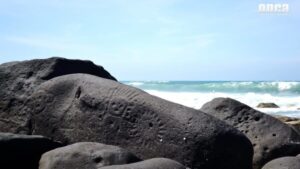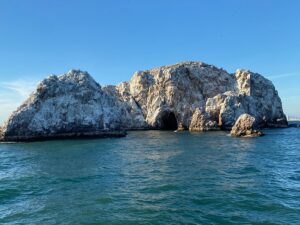Nestled along Colombia’s Caribbean coast, the Ciénaga Grande de Santa Marta is a sprawling coastal lagoon that offers a unique blend of natural beauty, rich biodiversity, and cultural heritage. This UNESCO-designated Biosphere Reserve is a must-visit for nature enthusiasts and those looking to experience the vibrant ecosystems of Colombia.
What to See and Do
The Ciénaga Grande is a paradise for bird watchers, with over 200 species of birds, including flamingos, herons, and pelicans. The lagoon’s mangrove forests are home to a variety of wildlife, making it an excellent spot for eco-tours and guided boat trips. Visitors can explore the waterways by canoe or kayak, offering a peaceful way to immerse in the natural surroundings.
For those interested in local culture, the nearby fishing villages, such as Nueva Venecia and Buenavista, provide a glimpse into the traditional way of life. These communities are built on stilts over the water, and visiting them offers a unique cultural experience. You can also enjoy fresh seafood dishes prepared by locals, giving you a taste of the region’s culinary offerings.
A Bit of History and Interesting Facts
The Ciénaga Grande has a rich history that dates back to pre-Columbian times. It was once inhabited by the indigenous Tairona people, who utilized the lagoon for fishing and transportation. Over the centuries, the area has been shaped by both natural and human influences, including the construction of the Ciénaga-Barranquilla highway, which altered the lagoon’s hydrology.
An interesting fact about the Ciénaga Grande is its role as a critical habitat for migratory birds. It serves as a stopover for birds traveling between North and South America, making it an essential site for bird conservation. The lagoon’s mangroves also play a crucial role in protecting the coastline from erosion and providing nursery grounds for marine life.
Getting There and Tips for First-Time Visitors
Reaching the Ciénaga Grande is relatively straightforward. The nearest major city is Santa Marta, which is well-connected by air and road. From Santa Marta, you can take a bus or hire a taxi to the town of Ciénaga, which serves as a gateway to the lagoon. From there, local guides and tour operators offer excursions into the Ciénaga Grande.
For first-time visitors, it’s advisable to plan your visit during the dry season, from December to April, when the weather is more favorable for outdoor activities. Be sure to bring insect repellent, sunscreen, and comfortable clothing suitable for warm and humid conditions. Engaging a local guide can enhance your experience, as they provide valuable insights into the area’s ecology and culture.
The Ciénaga Grande de Santa Marta is a destination that offers a unique blend of natural wonders and cultural experiences. Whether you’re exploring its rich biodiversity or learning about the traditional lifestyles of its inhabitants, this coastal lagoon is sure to leave a lasting impression.








